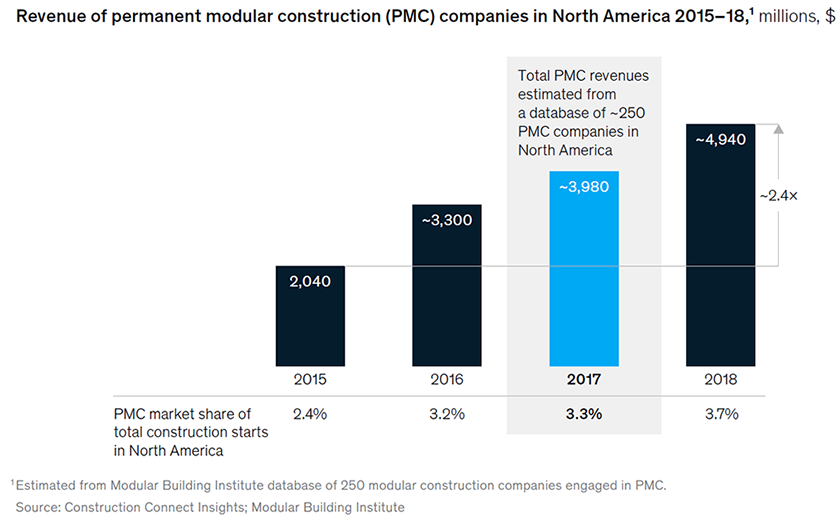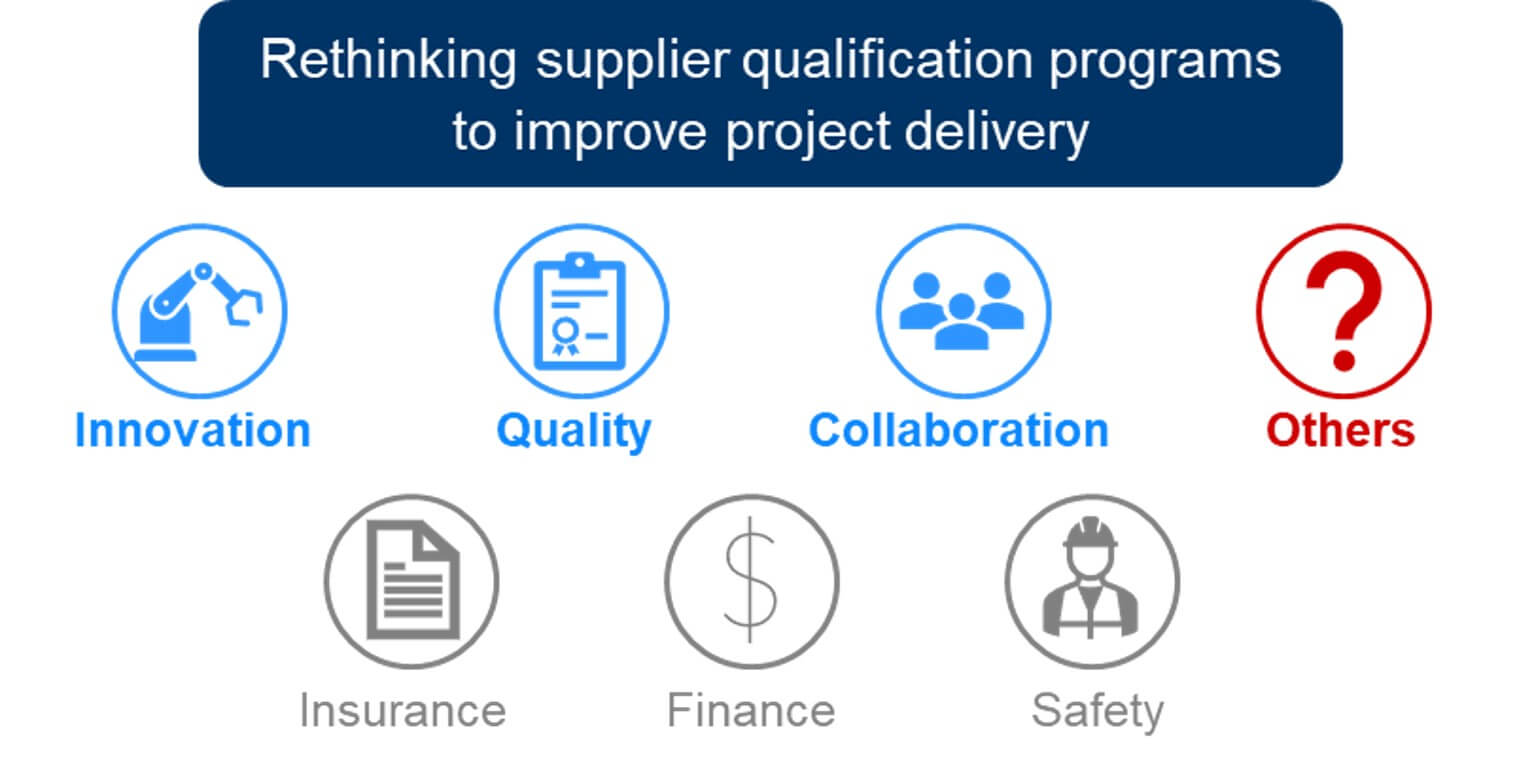Global Growth of Modularization
The advent of maximizing cost effectiveness of all types of construction coupled with the realities of COVID-19 have made the future execution strategy for industrial projects move towards maximizing the implementation of modularization on all projects. However, there is limited knowledge in the industry on what steps to take to implement modularization successfully. Unfortunately, many companies are implementing modularization poorly and too late on a project to provide significant cost and schedule reductions. This blog describes how imperative it is that the industry properly plan, execute and design every modularization project in order to take advantage of the reduced capital costs as well as the many other benefits modularization can bring to a project or program. It also lays out actions proposed by the Modularization CBA to facilitate industry-wide adoption of modularization.
The permanent modular construction market share of new North American real-estate construction projects has grown by 50 percent from 2015 to 2018 as illustrated in the below figure. [1] Industrial modularization is expected to follow the same trend.

COVID-19 has had a major impact on all industries including the heavy industrial construction sector. With the uncertainty of how to execute traditional stick-built construction projects, owners are trying to understand alternative steps they may have to take in order to ensure the health of the workplace while still constructing projects that are cost effective in order to be viable.
Anticipated adjustments at construction sites due to COVID-19 are impacting the projects site labor productivity. Effective application of Industrial modularization is providing a proven solution that moves site labor offsite into a controlled environment and improves labor productivity while maintaining worker health.
In 2017, the McKinsey Global Institute (MGI) highlighted that the construction industry needs to evolve and showed ways in which it can change to improve productivity by 50 to 60 percent and deliver $1.6 trillion a year in incremental global value.
Modularization and standardization are integral parts of improving construction productivity and will be required during and after the pandemic. Based on the June 2020 McKinsey & Company article, The Next Normal in Construction: How disruption is reshaping the world's largest ecosystem, “modularization, off-site production automation, and on-site assembly automation will enable industrialization and an off-site, product-based approach. The shift toward a more controlled environment will be even more valuable as the COVID-19 pandemic further unfolds. According to our executive survey, more than 75 percent of respondents agree that these shifts are likely to occur, and more than 60 percent believe that they are likely to occur within the next five years. The economic fallout from the COVID-19 pandemic looks set to accelerate them.” [2]
CII must recognize the need for more tools and guides to help member companies implement modularization in their projects. There are many publications on modularization and prefabrication and the benefits that modularization brings to a project, but there are very few tools or roadmaps on what and how a modular project should be executed. CII’s Research Team 283 has received feedback that it provides too much content in one place. Companies are looking to CII and other associations to provide simple practical guides on what is required to implement modularization on projects.
The CII Modularization CBA recognizes this gap in the CII knowledge base and has addressed this with a proposed research topic to develop simple practical guides and roadmaps to help member companies implement modularization on their projects. The effort will develop a set of tools that allows the practical application of the current RT-283 research into bite-sized, practical guidelines that assist in the following:
-
Properly identifying whether modularization is suitable for your project
-
How to get started with implementing modularization on your project
-
Identifying the early planning requirements for a modular project and when you will need to implement these requirements
In addition, the CII Modularization CBA is collaborating with the CII AWP CBA to ensure the AWP documentation addresses the early planning requirements of modularization and identifies any gaps in the current research.
We would like to invite any CII members that would be interested in further developing the modularization research and tools to join the Modularization CBA and help make these current initiatives possible. The CII Modularization CBA meets on the first Wednesday of every month at 10 am Central. For more information contact Modularization CBA Chair Michael.Kluck@kbr.com or Vice Chair Mark.k.Craig@conocophillips.com.
Sources:
1. “The next normal in construction: how disruption is reshaping the world’s largest ecosystem,” McKinsey & Company, June 2020
2. “Reinventing construction through a productivity revolution,” McKinsey Global Institute, February 2017


.jpg?width=1534&height=766&ext=.jpg)

